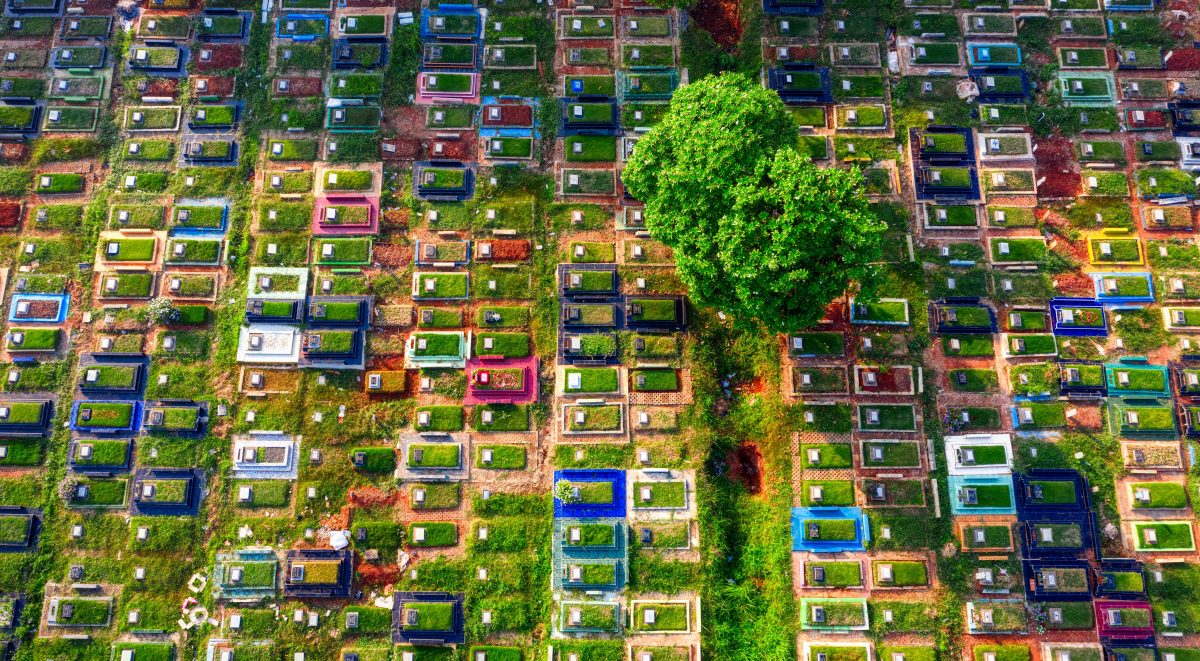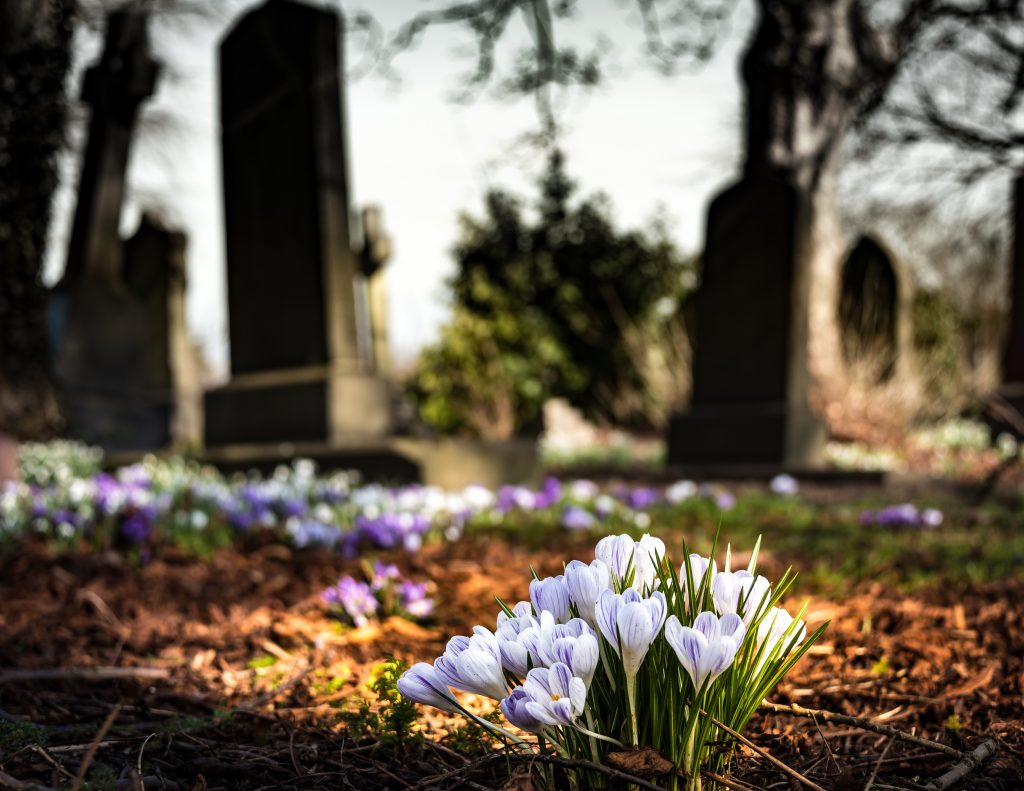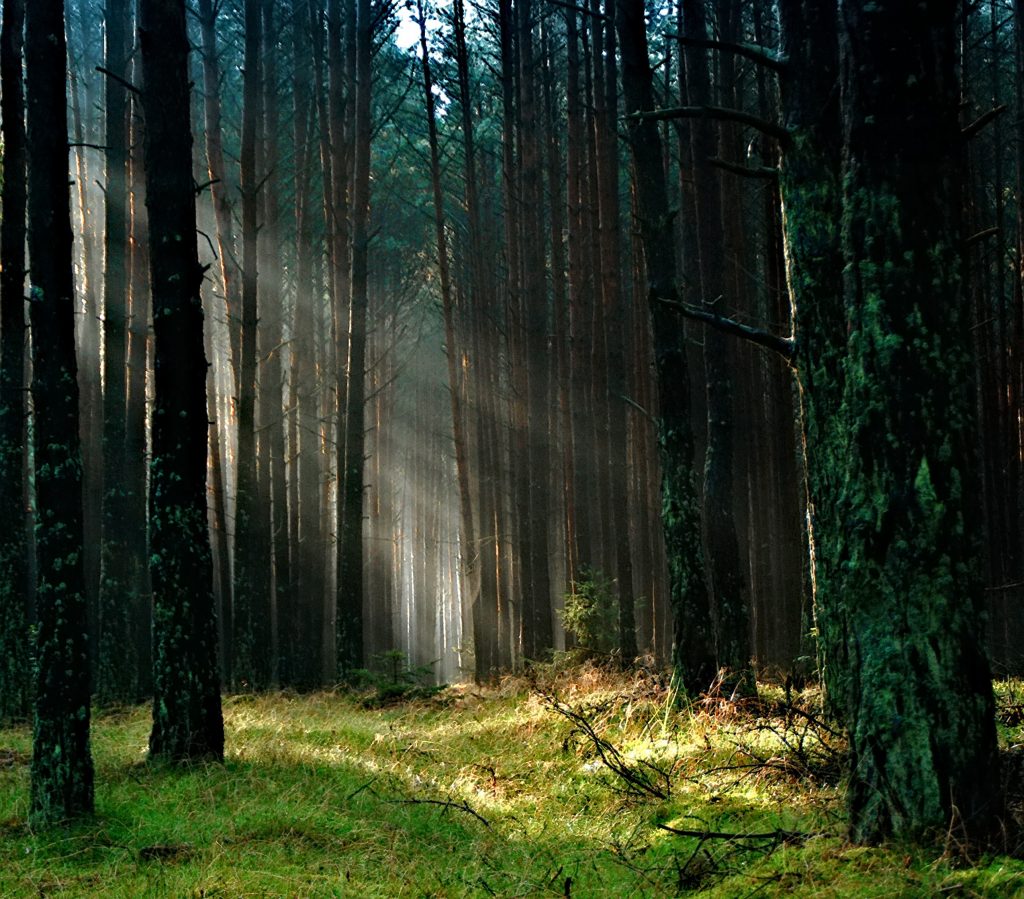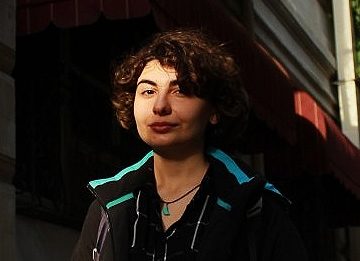
“If you turn a cemetery upside down it looks like the middle of the city – like a skyscraper”
– Dr. Julie Rugg
I am sure that everyone is afraid of death to some extent. We try to do the best living our life as perfectly as we can. However, of course, every story has its end and what about our end? Are our physical traces really as vital as our contribution to the world? Does the Earth need our bones in the depth of land or our ashes in the ocean? I understand deeply the historical and religious traditions regarding cemeteries and cremations, but I would like to answer these questions not from the religious, but from the environmental and social aspects.
To begin with, cemeteries take up a lot of space and resources. For example, each year burials in the United States use 30 million board feet of wood (each board foot is 12 inches by 12 inches by 1 inch), more than 104,272 tons of steel, 2,700 tons of copper and bronze, 1,636,000 million tons of concrete for burial construction. For embalming, it seems the golden rule is one gallon of fluid per 50 pounds of body. The mechanism is slowed down by the whole casket, cement enclosure and formaldehyde. But sooner or later, the entire body ends up in the water source of whatever place they are buried, including the gallons of poisonous, carcinogenic embalming fluid. According to the same article in the Berkeley Planning Journal, the wood alone is equivalent to about 4 million acres of forest and could be used to build 4.5 million homes.
Furthermore, everyone knows that as the world population increases significantly, we lack space and simultaneously the price of apartments rises too. Considering this situation, the more graves we create, the less space we will have for us to live in the future.
Fortunately, some countries such as Singapore, Germany and Belgium offer public graves for free for the first 20 years, thereafter, families must either make payment to keep them or the recent bodies are moved to these graves which are called mass graves/grave recycling. Although these systems work properly, for now, this is still not a sustainable way to solve the root of the problem.
Furthermore, there is a risk of soil contamination from casket burials which has a negative impact on the land and exposes funeral workers to the toxin. A number of metals such as silver, platinum, palladium and varnishes, sealers and preservatives which are used as coatings for coffins, embalming fluids that historically contained arsenic and mercury and, more recently, formaldehyde (a known carcinogen that contributes formulation of cancer) are unfortunately present in casket burials.
Another problem is groundwater pollution. Groundwater is the most obvious receptor to potential contamination from cemeteries, since it is closest to the source. The greater the number of burials, the higher the chance of contamination from groundwater. The soil itself often plays a significant role in determining the ease and rate of release of pollutants to groundwater, including the geological and hydrogeological characteristics of the soil, including soil form, permeability and porosity, as well as the depth of the water table.

Speaking of money, even death could not manage to escape from the trap of capitalism. The cost of an average funeral is approximately 10000 – 20000 AZN in Azerbaijan. If you want a lucrative burial space you must pay a maximum of 7000 AZN for the grave space, 2000 AZN for a tombstone from black granite (the most lucrative one). Thus, although our ancestors have said that both rich and poor go to the same land, even when they “sleep” on the ground, the rich are differentiated from the poor.
Thinking about how many hungry children I could feed by this funeral price, let us switch to another method of burial: cremation. Recent studies show that more people now prefer cremation to traditional burial. While cremation is less harmful to the environment, it is not most eco – friendly as it seems. It releases hazardous chemicals into the atmosphere such as carbon monoxide, sulfur dioxide, heavy metals, etc. According to the estimation of the manufacturer of cremation technology Matthews Environmental Solutions, one cremation produces an average of 534.6 pounds of carbon dioxide. This, literally, takes up and emits the same amount of energy as about two tanks of gas in an average car as claimed by Nora Menkin, executive director of People’s Memorial Association.
So far, we have discovered the drawbacks of traditional burials and cremation, but we also must propose a green and sustainable solution for burial, don’t we?
One of the alternatives is resomation, which uses alkaline hydrolysis as a chemical process. This method counts as environment-friendly because it uses water instead of flames and reduces the toxic emissions associated with traditional cremation. As with cremation, there are some remains left over after alkaline hydrolysis that families can keep in an urn or scatter in a special location.

Another option is biodegradable urn that takes the ashes of someone and turns them into a seeding ground for a new tree or encasing body into a pod that eventually sprouts into a tree. A whole forest of loved ones, full of oxygen is not a bad idea, huh?
Most people in grief think that how much money you spend shows how much you love and respect your relative. So, they run to expensive and not useful ways such as burials. Of course, loved ones need to be memorialized. However, are you sure that thousands of pounds of metal and wood is still the best way to grieve?
Also, it depends on religion. For example, in Islam cremation is strictly prohibited. Allah’s Messenger said: “Breaking a dead’s bones is like breaking it as if he is alive”. This means that there is no difference between harming a human being, dead or living. In other words, just harming a Muslim constitutes a great sin.

But I think that, if you love this person, they will live in your heart not depending on how much you spend, whether bury or cremate, because their body is already dead, not their soul. The main thing is how well you have spent time with them, when they were alive and what you will do in your future life to glad their soul.

Ayan Shamchiyeva
Executive member of Naturefriends Azerbaijan
Reference:
https://ggwash.org/view/70300/burial-culture-and-the-issues-with-using-so-much-space-for-cemeteries
https://www.groundsure.com/resources/grave-danger-cemeteries-as-a-source-of-groundwater-pollution/
